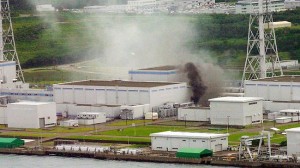Boyd puts out nuclear welcome mat
December 22nd, 2011
AAAAARGH, there goes PUC Commissioner (former chair) David Boyd putting out the welcome mat for nuclear power, nuclear plants and nuclear waste. This we DON’T need…
And note that he’s claiming that the hurdles are “costs” and “public perceptions.” Ummmm… where’s safety? Minnesota is home to a Fukushima Dai-ichi GE nuclear reactor, located in Monticello, north, upriver and upwind from the metro.
Safety, anyone? But then, I’ve been to the Appellate Court about the responsibility of the PUC for assuring that the utilities provide “safe” electricity, and we were tossed out. Power Line Task Force v. Public Utilities Commission
THE HURDLES OF COSTS AND PUBLIC PERCEPTIONS
Published In: EnergyBiz Magazine November / December 2011
David Boyd
THE FUTURE OF THE U.S. ELECTRICITY PORTFOLIO is a complex matter that asks the industry to find a path forward that acceptably balances many different factors. Once one acknowledges that every generating technology carries physical, financial and environmental risks, the conversation can begin in an intellectually honest manner. In the case of the nuclear industry, the issues frequently discussed are the costs of new construction, safety and fuel management.
Why would a utility consider nuclear power when public opinion on the risks and rewards appears to swing more significantly than it does for other technologies? A response requires taking stock of the broader situation as it stands today, and then focusing on the nuclear industry specifically.
We are entering a period where utilities will retool their generation fleets for the next 40 or more years. Construction will need to be phased over time, and the optimum portfolio could change with the passage of time. Policy drivers of this build-out include electricity that is reasonably priced, increasingly low carbon and as clean as possible, together with North American Electric Reliability Corp. and Federal Energy Regulatory Commission mandates for reliability. In addition, the evolving domestic gas supply, economics and the anticipated U.S. Environmental Protection Agency mandates dictate that coal use will be reduced in the near term. Some argue that this translates into a natural-gas dominated electricity sector. While I accept a movement to natural gas in the near term, that fuel will not yield the complete decarbonization of the electricity sector necessary to meet, for example, the goal to reduce total greenhouse gas emissions to 80 percent below 2005 levels by 2050, as per a Minnesota statute, among other state and federal guidelines. While we have made significant progress with wind and other renewables that support the greenhouse gas targets, questions remain regarding the cost and reliability of integrating very large quantities of renewable energy into the grid.
So is there is a place for new nuclear in our generation fleet? Advocates suggest that the answer is yes, with careful consideration of specific issues. Aside from hydro, nuclear plants are the only low- or no-carbon baseload option of significant scale for many states. Nuclear is also a part of a balanced generation portfolio that is prized by many – but at what cost, at what scale and under what circumstances? If the goal is to maintain the present 20 percent of electricity generation from nuclear, we will need to replace 40 reactors whose operating licenses expire by 2030.
There are a number of hurdles that remain for expansion of nuclear power in the United States. Chief among these is the capital cost of construction. Despite projections that the levelized cost of electricity from newly constructed plants will be competitive with other generating technologies, the project costs are so high that most utilities would be betting their futures by pursuing a new reactor. In addition, the first movers would need to develop new institutional knowledge and confront the preparedness of our domestic workforce. This could add significant costs, even though the effect would benefit those who might follow. Although the federal government has authorized loan guarantees to help overcome these barriers, they are significant issues that limit early movers in the industry.
Secondly, the federal obligation to take possession of spent fuel and place it in a repository, as dictated by the Nuclear Waste Policy Act and standing contracts with the utilities, has not been fulfilled, and this inaction adds to uncertainty. The Blue Ribbon Commission on America’s Nuclear Future has proposed policy actions to address this issue. Even with swift acceptance of the commission recommendations, it may be 12 years before any spent fuel begins to move from present storage sites. Furthermore, there remain matters of active litigation over the suspension of licensing activities for Yucca Mountain, and disputes over the Nuclear Waste Fund fees.


Leave a Reply